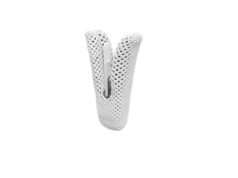
At the European Society of Cardiology Congress (ESC 2019; 31 August–4 September, Paris, France), Jean-Francois Obadia (Hopital Cardiovasculaire Louis Pradel, Chirurgie Cardio-Vasculaire et Transplantation Cardiaque, Lyon, France) reported that the two-year results of MITRA-FR indicate that percutaneous edge-to-edge repair in patients with secondary mitral regurgitation does not significantly reduce the composite rate of all-cause death and hospitalisation for heart failure compared with medical therapy. These results were eagerly awaited given the debate surrounding the apparently contradictory findings of MITRA-FR and COAPT.
Obadia presented the one-year results of MITRA-FR at the ESC last year and these showed that reducing mitral regurgitation with MitraClip (Abbott) did not significantly improve outcomes compared with medical therapy. However, a month later at TCT 2018, Gregg Stone (Columbia University Medical Center, NewYork-Presbyterian Hospital, and the Cardiovascular Research Foundation, New York, USA) presented the results of COAPT. These results showed that at two years, using MitraClip to manage patients with secondary mitral regurgitation was associated with a significant reduction in heart failure hospitalisation. Subsequently, there has been much discussion as to why there was such a different in the results between MITRA-FR and Obadia.
Speaking at the ESC, Obadia stated that one hypothesis for the difference was that COAPT had a longer follow-up period and that the benefit of MitraClip may not emerge until after one year.
“This is why we present the 24-month results of MITRA-FR,” he said.
In summary, in MITRA-FR, 304 symptomatic heart failure patients with severe secondary mitral regurgitation were randomised to receive medical therapy plus percutaneous mitral valve repair with MitraClip (152) or medical therapy alone (152). The primary efficacy outcome was the composite of all-cause death and unplanned hospitalisation for heart failure at 12 months. As mentioned, there were no significant differences in this endpoint between groups at 12 months.
Obadia reported that there was still no difference between groups at 24 months—suggesting that the longer follow-up in COAPT does not explain the difference in the results. However, he added that a subgroup analysis of events occurring between 12 and 24 months suggested a decrease with MitraClip in the rate of the first hospitalisation for heart failure. Writing in the European Journal of Heart Failure (the report was published simultaneously to the ESC presentation), Obadia and colleagues say: “This is consistent with the visually observed divergence of the curves of recurrent hospitalisations for heart failure, although the difference was not statistically significant at 24 months shown by the width of the confidence interval.”
However, Obadia and colleagues did not explore the benefits of MitraClip therapy in patients with proportionate mitral regurgitation vs. the benefits of those with disproportionate mitral regurgitation. Patrick Grayburn (Division of Cardiology, Department of Internal Medicine, Baylor University Medical Center, Dallas, USA) and colleagues proposed in JACC: Cardiovascular Imaging that patients with disproportionate mitral regurgitation (when the mitral regurgitation is not proportionate to the left ventricular dilatation) may “preferentially benefit from interventions directed at the mitral valve”. They add that patients in COAPT had, on average, disproportionate mitral regurgitation while those in MITRA-FR had, on average, proportionate mitral regurgitation. Thus, this difference in patient population may explain the difference in results.
Obadia, who sees the two trials as complementary, stated that he also believes patient selection was the main reason for the difference. “Differences in inclusion criteria led to more severe mitral regurgitation, less pronounced left ventricular remodelling, lower pulmonary pressure, and better right ventricular function in COAPT compared to MITRA-FR. In addition, the run-in period assessed by a central eligibility committee was likely to result in more optimised guideline-directed medical therapy in COAPT than in MITRA-FR. However, this set-up may be difficult to implement in everyday practice which rarely achieves optimised therapy.” He added that, on the other hand, the fact that in COAPT, the protocol discouraged modifications of the medical treatment could have negatively impact the prognosis of their control group with a very high mortality rate of 46% at two years vs. 34% in MITRA-FR.
Looking forwards, Obadia and colleagues plan to review the five-year follow-up of the MITRA-FR patients. Furthermore, at the ESC, he revealed that he and his colleagues are to work with the COAPT team on a meta-analysis of individual participant data of patients in both MITRA-FR and COAPT to further understand the role of MitraClip for the management of secondary mitral regurgitation. He added that, the available data from the studies, “confirm that MitraClip is very safe indeed.”












